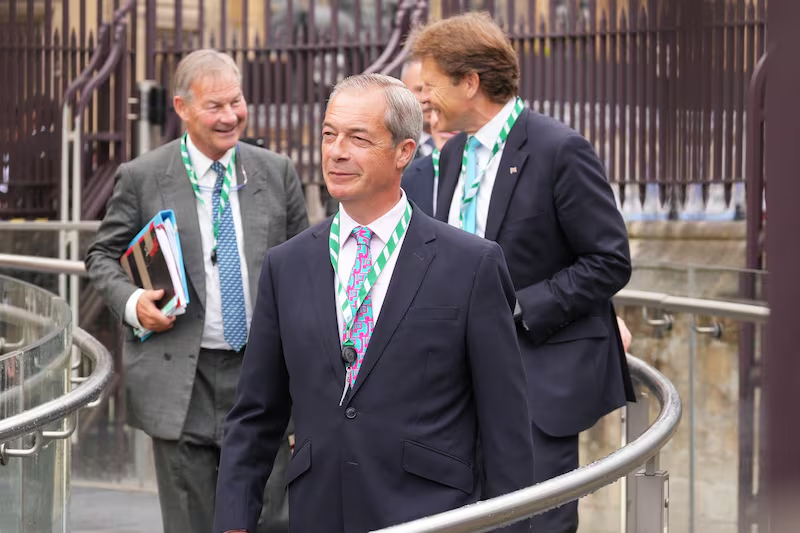It is barely 12.30pm but already there is a queue at the “butty van” in the car park outside the Turf pub, next to Wrexham AFC football club’s Racecourse Ground stadium.
It’s a sunny afternoon and crowds drink at picnic tables outside. Many wear red Wrexham jerseys. Inside, it is busy and the barman, Richie Griffiths, looks stressed. He is running out of beer. “We only just got an emergency delivery!” he pleads, as the Madri tap is the next to run dry.
Griffiths puffs his cheeks. Yet, he also laughs at the madness of it all because this is not even a match day. Wrexham AFC, a traditional old club bought in 2020 by Hollywood actors Ryan Reynolds and Rob McElhenney, won the fifth tier of the English game and promotion back to the football league the previous Saturday with a 3-1 victory over Boreham Wood. It’s now Wednesday. The party won’t stop.
The crowd around the pub and stadium is a mix of locals high on the feelgood factor and tourists drawn by Welcome to Wrexham, the hit Disney+ fly-on-the-wall series on the star-sprinkled buyout of a struggling club in an unfashionable Welsh barracks town.
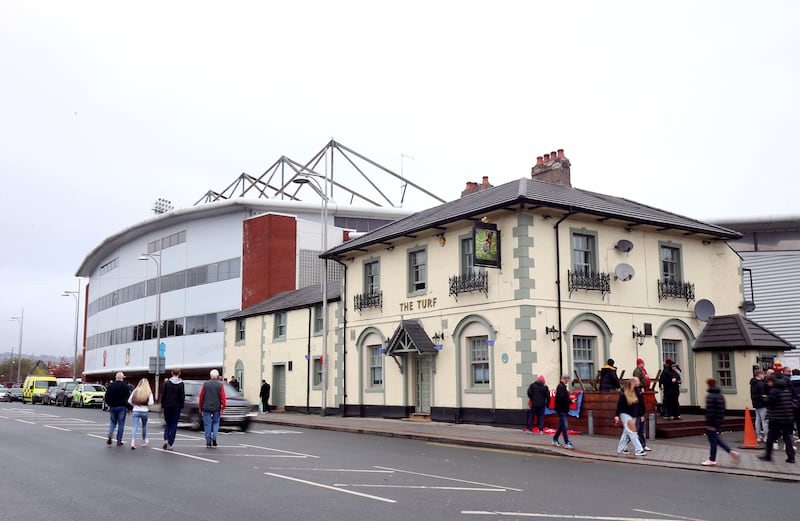
McElhenney and Reynolds seem to have fallen in love with its people as well as the club, promoting local businesses and helping charitable causes. An example is their donation last year of £20,000 to the family of a four-year old local girl, Aria Hodgkiss, to help buy medicines to ease her inoperable brain cancer. She died in December.
Meanwhile, before the Boreham game last week, Canadian Deadpool actor Reynolds was pictured with local man Jay Fear who also has cancer. Reynolds invited him to visit its filming set.
The Hollywood duo’s efforts in the town have won them respect while their investment in the club has brought success on the field. Welcome to Wrexham is a phenomenon. Tourism is booming. Wrexham AFC may now be the best-known British club in the US after the Premier League’s big six. Reynolds and McElhenney have brought a conveyor belt of stars over to visit, such as Will Ferrell.
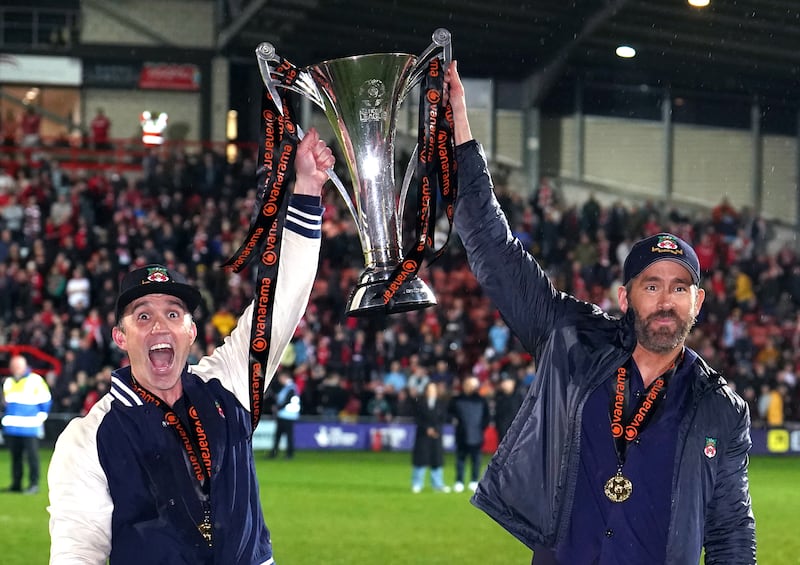
At the Turf on Wednesday, United States and European tourists rub shoulders with locals such as John, a retired oil rig worker, Geoff, who is also retired, and Marty, a plasterer from Banbridge in Co Down. He used to be a horse groom and worked at the Kinsealy estate of former Taoiseach Charles Haughey before moving across 30 years ago. He orders another pint, wincing as he reaches across the counter for it.
“I dislocated me shoulder,” he announces. “Look!” Marty lifts his Wrexham jersey to reveal an enormous bruise. Tourists and locals in the bar murmur and shake their heads in sympathy. Marty believes it took seven doctors to get his shoulder back in, although his memory is hazy. He sups his pint. “But, I bet I can still skim a ceiling,” he says, reaching upwards. He winces again.
Outside, the pub’s landlord Wayne Jones, a breakout star of the Disney documentary, comes from behind the butty van counter to pose for a selfie with a tourist. She is Paula Souza, a Brazilian living in Lisbon. She was visiting Manchester with her partner, Daniel Lima, but came on a day-trip to Wrexham after seeing the documentary.
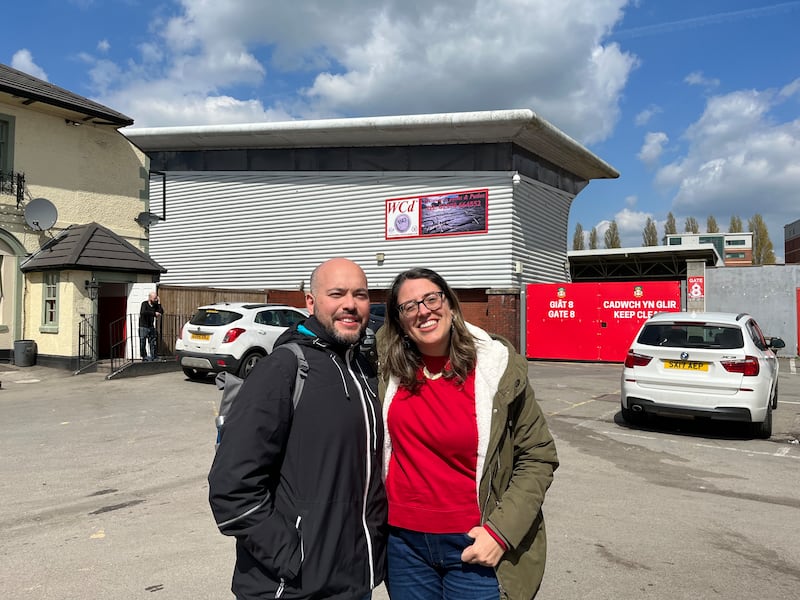
“I lived in Britain 15 years ago but I don’t remember them all being as friendly as this,” she says, beaming after meeting Jones.
Wrexham’s football club fans feel like they have won the lottery with the upsurge in their club and across the local area, since the arrival of “Ryan and Rob”, as everybody here refers to them.
“There were lads wandering into the pub the day after we won promotion, still crying and looking for someone to hug,” says Griffiths. His T-shirt bears a cartoon of Wrexham fans drinking. “Ratarsed! Come on the town ...” it says. Wrexham, population 61,000, finally achieved city status in 2022 after years of knock-backs from officialdom. Yet, its football club will always be “the town”.
Griffiths whips out his mobile phone. Here’s the video of Reynolds serving behind the bar after a match. Here’s McElhenney’s wife, actress Caitlin Olson, in a selfie with staff. Here’s Ant-Man actor, Paul Rudd. When the pub was mobbed after one game, McElhenney’s mother collected glasses.
He nods towards the pool table just inside the door. Soon after the Hollywood duo bought the club, when the feelgood factor had yet to register beyond Wrexham, he collared Reynolds at the pool table and thanked him for what they were doing for the area. “He put his two hands on my shoulders and said: ‘Get ready for the journey we’re all about to go on.’”
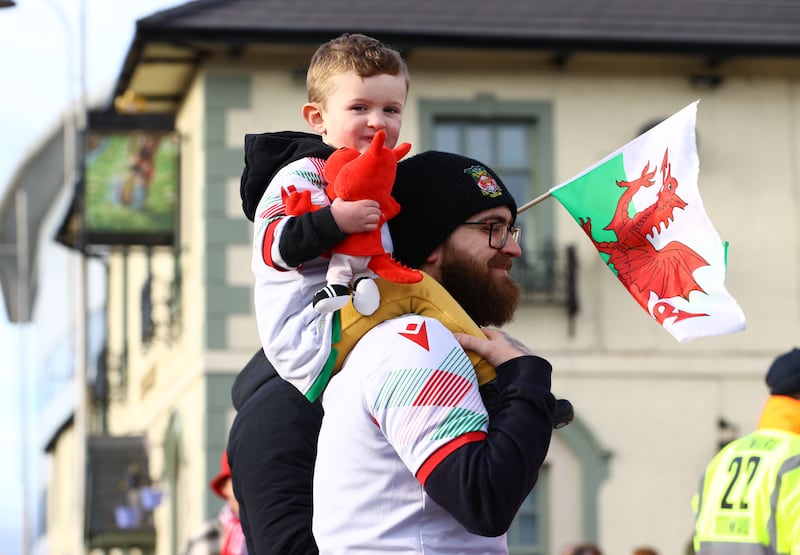
What a journey it has been for Wrexham, which sits just over the border from England, a one hour drive southwest of Manchester. The town is now a “global brand”, says local council leader, Mark Pritchard. He was among a group of politicians who held a private ceremony recently to award Reynolds and McElhenney the freedom of the borough.
“Wrexham had its difficulties, after the leatherworks and the brickworks and mines closed,” he says. “But, we’ve invested in the town. We’ve got plenty of employment here now.”
The area never suffered the deprivation of old mining towns in south Wales such as Merthyr Tydfil. Other lighter manufacturing jobs, such as JCB and Kellogg’s, came in and remain big employers. Wrexham is resolutely working class yet relatively prosperous, with unemployment of 4 per cent.
[ Mark Paul: Thatcher's nuanced legacy in WalesOpens in new window ]
Two things “make this town tick”, says Pritchard – the military and football. Wrexham has a large army recruitment centre on the edge of the city’s attractive pedestrianised centre. At the nearby Lemon Tree restaurant and rooms, staff say they’ve been booked out at weekends for months, mostly with north Americans. “We’ve got the tourists. We just need the shops now,” says one.
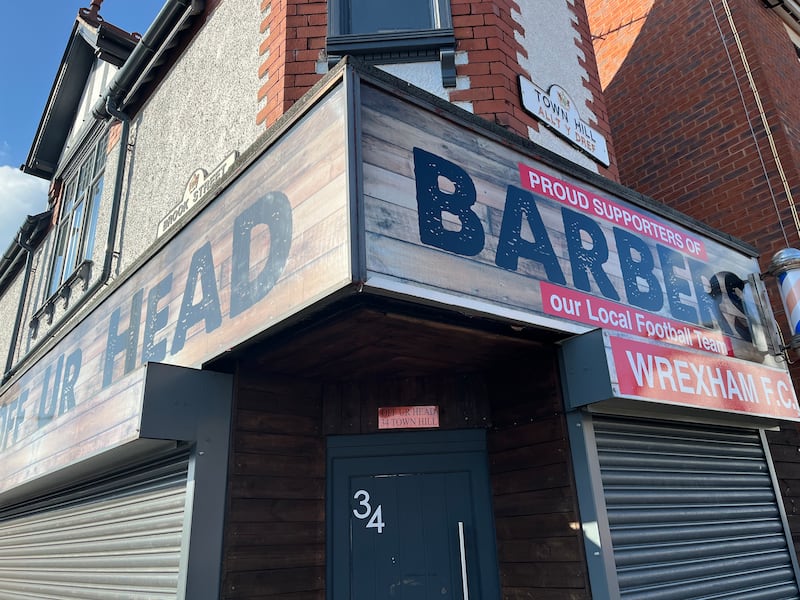
Pritchard believes more investment will come. The council is helping fund a new football stand and conference centre at the railway end of the Racecourse Ground. Another nearby site goes out to tender soon for mixed-use development.
“Everybody’s walking around with a smile on their face. The international attention has been unreal. If someone sneezes now in Wrexham, it’s a story,” says Pritchard.
Not everywhere in Wrexham is paradise. Barely a 10-minute walk out of the town, the evidence of social challenges are obvious in parts of areas such as Hightown, Caia Park and Queensway, which rank among the poorest neighbourhoods in Wales. Even here, however, all the talk is of football.
A young woman eating from a tray outside the Hungry Inn takeaway on Prince Charles Road in Caia Park yells in conversation to a man across the road. He couldn’t get a ticket outside the Racecourse for the Boreham game. “I thought you’d have a season ticket,” she said. “I will next year!” he replies.
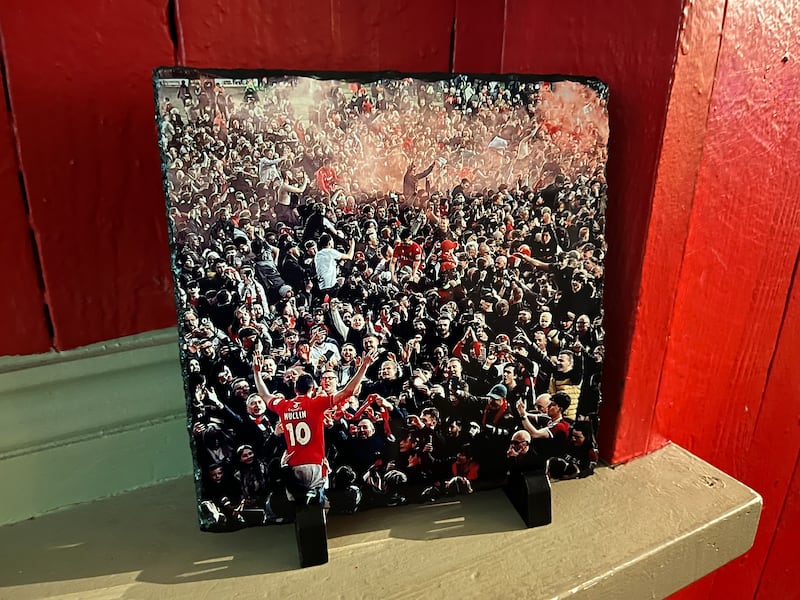
That evening, back at the Turf, Griffiths has swapped his Ratarsed T-shirt for a Wales top. European tourists throng the bar. Visitors roam the bar snapping pictures of the football mementos. The latest iconic shot is less than a week-old, Wrexham star striker Paul Mullin celebrating in front of a huge crowd at the end of the Boreham game.
One European visitor is disappointed that Griffiths has now run out of Aviation Gin, the brand co-owned by Reynolds. A New York Times reporter goes from table to table talking to locals. The word among local drinkers is that Conor McGregor wants to sponsor the new stadium stand.
Griffiths is puffing his cheeks again. “It’s bloody mental,” he says. Welcome to Wrexham.


